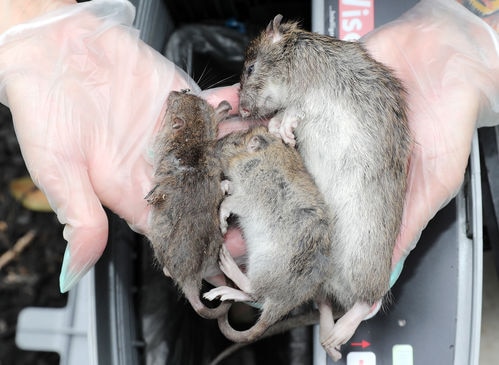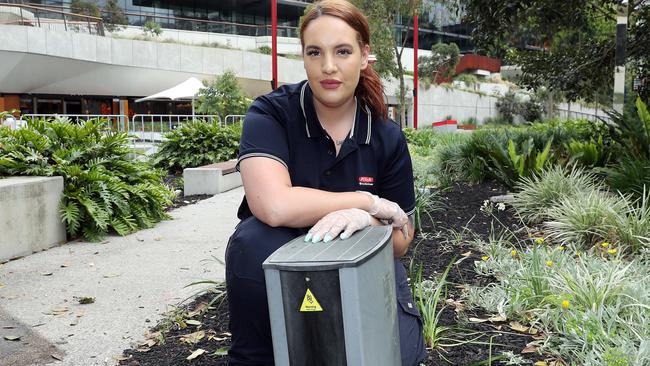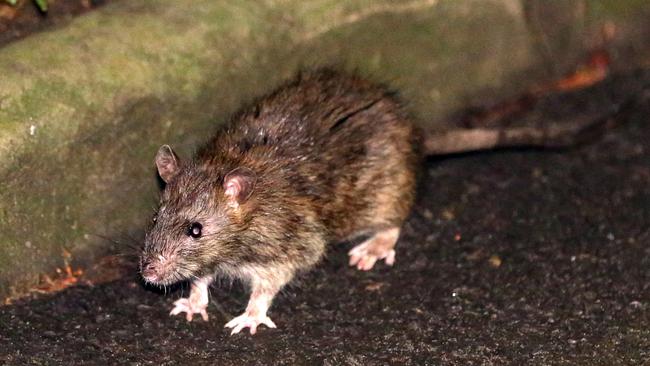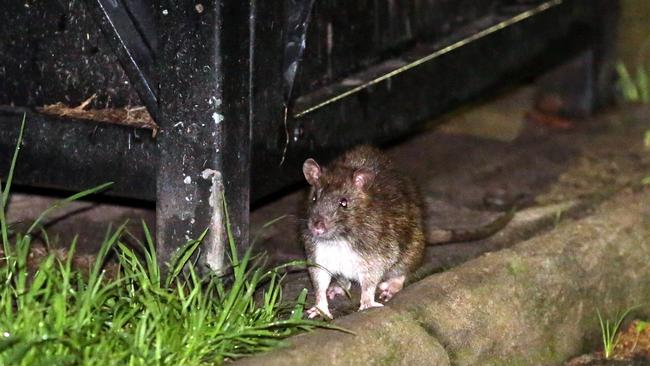Rats have infested Sydney’s richest suburbs after the COVID lockdown
Rats have infested some of Sydney’s richest suburbs as they resort to desperate measures to find scraps after months deprived of their usual food source during the COVID lockdown.

NSW
Don't miss out on the headlines from NSW. Followed categories will be added to My News.
Brazen and famished “super-rats” are venturing into some of Sydney’s richest waterfront suburbs and CBD businesses desperate for scraps as the state emerges from lockdown.
Rat catchers have reported a “strange” and unseasonal spike in rodent captures after a short three-month lull in numbers when coronavirus restrictions were lifted in July.
The Norway rat species are the most common rodents which nest in Sydney.
They arrived along with black rats on Australian shores with the First Fleet in the 18th century.

Rat catcher Elizabeth Stanton said rats had been spotted in growing numbers scurrying around waterfront suburbs like Mosman, Bondi, Cronulla, Potts Point, North Sydney and parts of the CBD.
“Coronavirus has caused an issue because with everything shutting down we almost eliminated the rats’ food and water supplies and they’re moving to different areas.
“There has been an increase in the rat population now because there’s more food and water supply for our rodents.”
At the height of the lockdown in May, there was a surge in rat sightings, with more than 600 captured in the city alone.
But they have again come out to play, with a 35 per cent increase since August, according to pest control company Flick.

Ms Stanton said the rats have earnt the title “super-rats” because they have developed immunity to some rat poisons.
“The rats can develop immunity to different types of bait so now we have to kill them with electrical technology. They are highly intelligent.”
Flick general manager Shaun Azhar said the spike in the rodent population across the city was unusual for this time of year.
“In other years it was different. We’ve never had a huge spike in captures like this. The trend is definitely strange and not like other years. It’s usually more static,” he said.
As well as waterfront areas, the rats have also been spotted in dense inner city suburbs like Newtown, Bondi, Glebe, St Peters and Sydney CBD.
Mr Azhar said bustling areas with water like Sydney Park, Darling Harbour and the Opera House — and construction sites like Barangaroo — were also teeming with rodents.

“Usually they’d be in amongst the rubbish but now they’re going into buildings and areas such as roofs, rails and kitchen,” he said.
“It’s particularly bad in places with lots of development because the ground is shaking.”
Mr Azhar said the rodents have also become more brazen, braving places like schools, businesses, homes and apartment blocks and emboldened by the increased amount of food scraps and waste on the streets.
Breeding season has almost ended too, meaning parents are sending their young out to squeeze through tight spaces and scavenge for food.
“What’s driving the rodents is that they got through winter hibernation and breeding with less food and now they know the food supply is better and they’re back,” he said.

Rat expert Mathew Crowther is working with the City of Sydney to monitor changes to the local rat population.
He says rats are hungrier and bolder than ever before because they were deprived of food for so long. Now, he’s concerned they could pose a real danger to dogs because of leptoscorosis.
“It’s not good, there’s a lot of problems rats cause including spreading disease to animals in close proximity,” Mr Crowther said.
Some of the warning signs to look out for in your home include watching for rodent droppings, chewed objects and grease mark on skirting boards.
“If you see any of these signs, call a qualified pest controller,” he said.
More Coverage
Originally published as Rats have infested Sydney’s richest suburbs after the COVID lockdown

